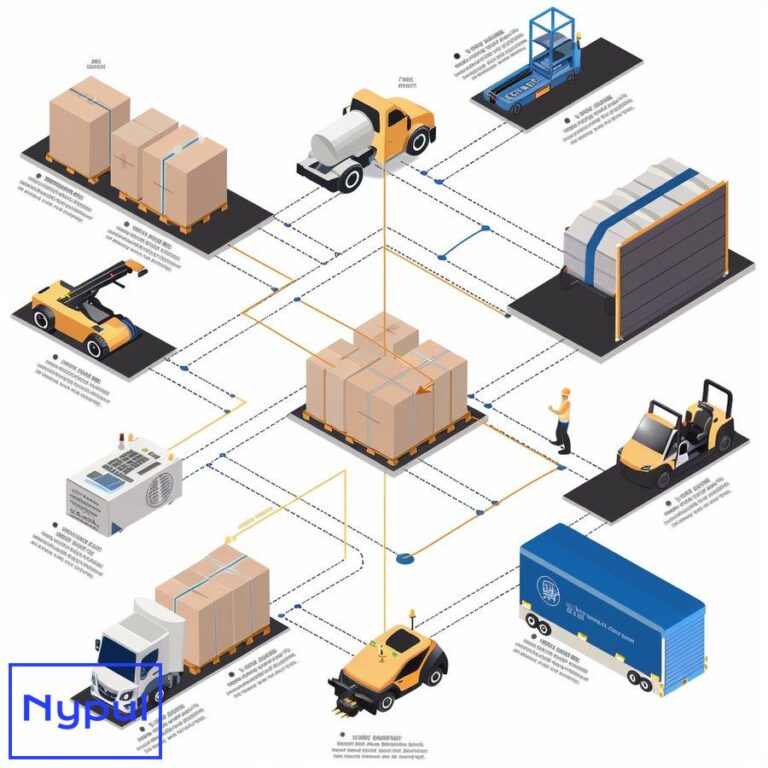What Are the Trailer Types Sizes of Long Haul Trailers
What are the most common types of long haul trailers?
Long haul trucking forms the backbone of freight transportation across North America. The trailers used for these extended journeys come in various types, each designed to meet specific cargo needs. Understanding the most common long haul trailer types helps shippers and carriers optimize their logistics operations.
Dry van trailers
![]()
Dry van trailers reign supreme in the long haul trucking world. These enclosed boxes on wheels transport a wide range of non-perishable goods. Dry vans protect cargo from the elements and offer security during transit. Their versatility makes them ideal for hauling everything from consumer goods to industrial materials.
Key features of dry van trailers:
– Fully enclosed design
– Standard lengths of 48 or 53 feet
– Interior height typically 110 inches
– Loading capacity around 45,000 pounds
Refrigerated trailers
Also known as reefers, refrigerated trailers maintain precise temperature control for perishable goods. These specialized units transport fresh produce, frozen foods, pharmaceuticals, and other temperature-sensitive items. Reefers use built-in cooling systems to keep cargo at the desired temperature throughout the journey.
Distinguishing traits of refrigerated trailers:
– Insulated walls and roof
– Onboard refrigeration unit
– Temperature range from -20°F to 70°F
– Slightly lower cargo capacity than dry vans due to cooling equipment
Flatbed trailers
Flatbed trailers provide an open platform for hauling oversized or irregularly shaped cargo. These versatile trailers accommodate loads that don’t fit standard enclosed units. Construction materials, machinery, and vehicles often travel via flatbed. The open design allows for easy loading and unloading from all sides.
Notable aspects of flatbed trailers:
– No walls or roof
– Lengths from 48 to 53 feet
– Width of 102 inches
– Deck height around 60 inches
– Tie-down points for securing loads
Step deck trailers
Step deck trailers, also called drop deck trailers, feature a lowered main deck for taller loads. The “step” design allows for additional vertical clearance compared to standard flatbeds. This makes step decks ideal for hauling equipment or materials that exceed normal height restrictions.
Key characteristics of step deck trailers:
– Two deck levels (upper and lower)
– Lower deck typically 11 feet long
– Main deck usually 37 to 41 feet in length
– Total legal height up to 10 feet
Lowboy trailers
Lowboy trailers specialize in transporting extremely tall or heavy equipment. These trailers have an extra-low deck positioned between the wheels, allowing for maximum vertical clearance. Construction vehicles, industrial machinery, and other oversize loads often rely on lowboys for safe transport.
Distinctive features of lowboy trailers:
– Deck height as low as 18 inches off the ground
– Two drops in deck height (front and rear)
– Typical deck length of 29 to 30 feet
– Legal load height up to 11.5 feet
Tanker trailers
Tanker trailers transport liquid or gaseous materials in bulk quantities. These cylindrical units haul everything from milk and petroleum products to chemicals and compressed gases. Tankers come in various sizes and configurations to accommodate different types of liquid cargo.
Key aspects of tanker trailers:
– Cylindrical tank design
– Capacities ranging from 5,000 to 11,600 gallons
– Specialized loading and unloading valves
– Baffles to prevent liquid surge during transport
While these represent the most common long haul trailer types, specialized variations exist for niche cargo needs. Carriers and shippers must carefully consider their freight requirements when selecting the appropriate trailer for each load.
How do standard dimensions vary among long haul trailers?
Long haul trailers come in a range of dimensions to accommodate different cargo types and transportation needs. Understanding these variations helps logistics professionals optimize load planning and ensure compliance with regulations. Let’s explore the standard dimensions for common long haul trailer types.
Dry van trailers

Dry vans represent the most standardized trailer type in long haul trucking. Their uniform dimensions facilitate efficient loading and unloading processes.
Standard dimensions for dry van trailers:
– Length: 48 or 53 feet
– Width: 102 inches (8.5 feet)
– Interior height: 110 inches (9 feet 2 inches)
– Door opening: 96 inches wide by 110 inches high
Some carriers offer high cube dry vans with increased interior height:
– Interior height: 110 to 114 inches
Refrigerated trailers
Reefer trailers closely mirror dry van dimensions, with slight variations due to insulation and cooling equipment.
Typical dimensions for refrigerated trailers:
– Length: 48 or 53 feet
– Width: 102 inches (8.5 feet)
– Interior height: 105 to 108 inches
– Door opening: 94 inches wide by 106 inches high
Flatbed trailers
Flatbeds offer more flexibility in load dimensions due to their open design. However, standard sizes still apply for regulatory compliance.
Common flatbed trailer dimensions:
– Length: 48 or 53 feet
– Width: 102 inches (8.5 feet)
– Deck height: 58 to 62 inches
Step deck trailers
Step deck trailers feature two distinct deck levels, each with its own dimensional specifications.
Typical step deck dimensions:
– Overall length: 48 or 53 feet
– Width: 102 inches (8.5 feet)
– Upper deck length: 10 to 11 feet
– Upper deck height: 62 inches
– Lower deck length: 37 to 43 feet
– Lower deck height: 40 to 42 inches
Lowboy trailers
Lowboy trailers prioritize vertical clearance for oversize loads. Their dimensions reflect this specialized purpose.
Standard lowboy trailer dimensions:
– Overall length: 48 to 53 feet
– Width: 102 inches (8.5 feet)
– Deck length: 29 to 30 feet
– Deck height: 18 to 24 inches
– Well depth: 12 to 18 inches
Tanker trailers
Tanker dimensions vary based on capacity and cargo type. However, some general standards apply to most long haul tanker trailers.
Common tanker trailer dimensions:
– Overall length: 42 to 45 feet
– Diameter: 60 to 80 inches
– Capacity: 5,000 to 11,600 gallons
This table summarizes the key dimensional variations among long haul trailer types:
| Trailer Type | Length (ft) | Width (in) | Interior Height (in) | Deck Height (in) |
|---|---|---|---|---|
| Dry Van | 48 or 53 | 102 | 110 | N/A |
| Refrigerated | 48 or 53 | 102 | 105-108 | N/A |
| Flatbed | 48 or 53 | 102 | N/A | 58-62 |
| Step Deck | 48 or 53 | 102 | N/A | 40-62 |
| Lowboy | 48 or 53 | 102 | N/A | 18-24 |
| Tanker | 42-45 | 60-80 (dia) | N/A | N/A |
While these dimensions represent industry standards, slight variations may exist between manufacturers and specific models. Carriers and shippers should always verify exact measurements when planning loads or selecting equipment for specific cargo needs.
What are the key specifications of dry van trailers?
Dry van trailers serve as the workhorses of long haul trucking, transporting a vast array of non-perishable goods across North America. Understanding their key specifications helps logistics professionals optimize cargo planning and ensure efficient operations. Let’s delve into the essential characteristics that define dry van trailers.
Structural components
Dry van trailers consist of several crucial structural elements that contribute to their durability and functionality.
Frame: The trailer’s backbone, typically constructed from high-strength steel or aluminum alloys. Steel frames offer superior strength, while aluminum reduces overall weight.
Walls: Composed of durable materials like fiberglass-reinforced plywood or composite panels. These walls provide protection from the elements and maintain structural integrity.
Roof: Usually made from one-piece aluminum sheets or translucent materials that allow natural light inside the trailer.
Floor: Constructed from hardwood planks or composite materials designed to withstand heavy loads and frequent forklift traffic.
Dimensions and capacity
Dry van trailers adhere to standardized dimensions that facilitate efficient loading and unloading processes.
Length: Most common lengths are 48 and 53 feet, with 53-foot trailers dominating long haul routes.
Width: Standard exterior width of 102 inches (8.5 feet), with interior width typically measuring 99 inches.
Height: Exterior height of 13 feet 6 inches, with interior heights ranging from 110 to 114 inches for high cube models.
Cargo capacity: Varies based on trailer length and construction materials.
– 48-foot trailers: 3,000 to 3,500 cubic feet
– 53-foot trailers: 3,500 to 4,000 cubic feet
Weight capacity: Maximum gross vehicle weight (GVW) of 80,000 pounds, including the tractor. Typical payload capacity ranges from 42,000 to 45,000 pounds.
Door configurations
Dry van trailers offer various door options to accommodate different loading requirements.
Swing doors: Traditional rear doors that open outward, providing full access to the trailer interior. These doors typically feature heavy-duty hinges and locking mechanisms.
Roll-up doors: Vertically opening doors that save space in tight loading areas. While less common on long haul trailers, they offer advantages for certain applications.
Side doors: Some dry vans feature optional side doors for easy access to specific cargo areas without opening the rear doors.
Suspension systems
The suspension system plays a crucial role in ride quality and load stability. Two primary types are used in dry van trailers:
Spring suspension: Utilizes leaf springs for a cost-effective and durable solution. This system offers reliable performance but may provide a rougher ride compared to air suspension.
Air ride suspension: Features air bags that adjust to road conditions and load weight. Air ride systems offer superior cargo protection and improved driver comfort, making them popular for long haul applications.
Additional features
Modern dry van trailers incorporate various features to enhance functionality and efficiency:
Logistic posts: Vertical tracks inside the trailer walls allow for flexible cargo securement options.
Scuff plates: Reinforced lower sections of interior walls protect against damage from forklifts and cargo shifting.
Roof bows: Structural supports that maintain the trailer’s shape and prevent sagging.
Landing gear: Retractable legs that support the trailer when disconnected from the tractor.
Aerodynamic enhancements: Side skirts, tail fairings, and other devices that improve fuel efficiency by reducing air resistance.
This table summarizes key specifications for standard 53-foot dry van trailers:
| Specification | Measurement |
|---|---|
| Exterior Length | 53 feet |
| Exterior Width | 102 inches |
| Exterior Height | 13 feet 6 inches |
| Interior Length | 52 feet 6 inches |
| Interior Width | 99 inches |
| Interior Height | 110-114 inches |
| Cargo Capacity | 3,500-4,000 cubic feet |
| Maximum GVW | 80,000 pounds |
| Typical Payload | 42,000-45,000 pounds |
| Door Opening Width | 96 inches |
| Door Opening Height | 110 inches |
These specifications provide a foundation for understanding dry van trailers. However, specific models may offer variations or additional features to meet unique transportation needs.
How do refrigerated trailers differ from other trailer types?
Refrigerated trailers, commonly known as reefers, stand apart from other long haul trailer types due to their specialized temperature control capabilities. These units play a crucial role in transporting perishable goods, pharmaceuticals, and other temperature-sensitive cargo. Let’s explore the key differences that set refrigerated trailers apart.
Temperature control system
The defining feature of refrigerated trailers is their built-in cooling system. This sophisticated equipment maintains precise temperature control throughout the journey.
Refrigeration unit: Mounted at the front of the trailer, this diesel-powered system circulates cooled air throughout the cargo area.
Temperature range: Reefers typically maintain temperatures from -20°F to 70°F, accommodating frozen, chilled, and ambient cargo needs.
Temperature monitoring: Advanced systems provide real-time temperature tracking and alerts to ensure cargo integrity.
Insulation
Refrigerated trailers feature superior insulation compared to standard dry vans, crucial for maintaining the desired temperature.
Wall construction: Thick foam insulation sandwiched between interior and exterior panels provides excellent thermal efficiency.
Floor insulation: Specially designed floors minimize heat transfer from the road surface.
Door seals: Heavy-duty gaskets and seals prevent air leakage and maintain temperature consistency.
Interior design
The interior of refrigerated trailers incorporates features specific to temperature-controlled transport.
Air chutes: Ceiling-mounted channels direct cooled air evenly throughout the trailer.
Floor channels: Raised floors allow for improved air circulation beneath the cargo.
Drain holes: Strategic drainage points prevent water accumulation from condensation or defrosting.
Cargo capacity
Due to the additional insulation and cooling equipment, refrigerated trailers have slightly reduced cargo capacity compared to dry vans.
Interior dimensions: Typically 1-2 inches less in width and height than comparable dry vans.
Weight capacity: The refrigeration unit adds approximately 2,000 pounds to the trailer weight, reducing available payload capacity.
Power requirements
Refrigerated trailers demand additional power sources to maintain temperature control during transit.
Diesel fuel: The refrigeration unit requires its own fuel supply, separate from the tractor.
Auxiliary power: Some reefers feature electric standby capabilities for use at loading docks or during extended stops.
Maintenance considerations
Refrigerated trailers require specialized maintenance beyond standard trailer upkeep.
Refrigeration system: Regular servicing of the cooling unit is essential for reliable operation.
Calibration: Temperature sensors and controls need periodic calibration to ensure accuracy.
Cleaning: Thorough interior cleaning and sanitization are crucial for food safety compliance.
Cost factors
The specialized nature of refrigerated trailers impacts both initial and operational costs.
Purchase price: Reefers typically cost 2-3 times more than comparable dry van trailers.
Fuel consumption: Operating the refrigeration unit increases overall fuel usage during transport.
Maintenance expenses: Specialized equipment requires more frequent and costly maintenance.
This table highlights key differences between refrigerated trailers and standard dry vans:
| Feature | Refrigerated Trailer | Dry Van Trailer |
|---|---|---|
| Temperature Control | -20°F to 70°F | Ambient only |
| Insulation | 2-4 inches of foam | Minimal or none |
| Interior Design | Air chutes, raised floor | Basic enclosed space |
| Cargo Capacity | Slightly reduced | Maximum for trailer size |
| Power Requirements | Separate cooling unit | None beyond tractor |
| Maintenance Needs | Cooling system + standard | Standard trailer maintenance |
| Initial Cost | 2-3x higher than dry van | Base cost for comparison |
| Operational Expenses | Higher due to cooling unit | Lower overall costs |
While refrigerated trailers share some similarities with dry vans in terms of overall dimensions and basic structure, their specialized features set them apart as essential tools for temperature-controlled logistics. The ability to maintain precise environmental conditions throughout long haul journeys makes reefers indispensable for transporting a wide range of sensitive cargo.
What are the unique features of flatbed and specialized trailers?

Flatbed and specialized trailers cater to cargo that doesn’t fit the standard enclosed trailer mold. These versatile units handle oversized, irregularly shaped, or heavy loads that require unique transportation solutions. Let’s explore the distinctive features that set flatbed and specialized trailers apart in the world of long haul trucking.
Flatbed trailers
Flatbed trailers offer an open platform for hauling a wide variety of cargo types. Their design prioritizes flexibility and ease of loading.
Open deck: The defining feature of flatbeds is their lack of walls or roof, allowing for easy side and top loading.
Tie-down points:## What are the unique features of flatbed and specialized trailers?
Flatbed and specialized trailers cater to cargo that doesn’t fit the standard enclosed trailer mold. These versatile units handle oversized, irregularly shaped, or heavy loads that require unique transportation solutions. Let’s explore the distinctive features that set flatbed and specialized trailers apart in the world of long haul trucking.
Flatbed trailers
Flatbed trailers offer an open platform for hauling a wide variety of cargo types. Their design prioritizes flexibility and ease of loading.
Open deck: The defining feature of flatbeds is their lack of walls or roof, allowing for easy side and top loading.
Tie-down points: Numerous attachment points along the deck and frame enable secure load securement using chains, straps, or tarps.
Deck materials: Flatbed decks are typically made from wood, aluminum, or steel, depending on the specific application and weight requirements.
Dimensions: Standard lengths range from 48 to 53 feet, with a width of 102 inches. Deck height averages 60 inches from the ground.
Weight capacity: Flatbeds have a maximum GVW of 80,000 pounds, with payload capacities varying based on trailer length and materials.
Specialized trailers
Specialized trailers are designed to handle unique cargo types or transportation needs that fall outside the scope of standard flatbeds or enclosed trailers.
Removable gooseneck (RGN) trailers
RGN trailers feature a detachable front section that allows for loading extremely heavy or tall equipment. The gooseneck can be lowered to the ground, enabling easy drive-on/drive-off loading.
Key features of RGN trailers:
– Detachable front section (gooseneck)
– Hydraulic lift for lowering the gooseneck
– Typical deck length of 22 to 30 feet
– Deck height as low as 18 inches
– Weight capacity up to 80,000 pounds
Extendable trailers
Extendable trailers offer an adjustable deck length to accommodate oversized loads. The rear section can telescope out, providing additional space for long cargo.
Notable aspects of extendable trailers:
– Telescoping rear section
– Typical extended length up to 80 feet
– Hydraulic or manual extension mechanism
– Reduced weight capacity when fully extended
Conestoga trailers
Conestoga trailers combine the versatility of flatbeds with the protection of an enclosed trailer. They feature a retractable tarp system that can cover the open deck, shielding cargo from the elements.
Key characteristics of Conestoga trailers:
– Retractable tarp system
– Typical deck length of 48 or 53 feet
– Tarp extends to fully enclose the cargo area
– Allows for side, top, and rear loading
– Provides some weather protection for cargo
Tanker trailers
Tanker trailers are specialized units designed to transport liquids, gases, or dry bulk materials in large quantities. These cylindrical trailers come in various configurations to suit specific cargo needs.
Types of tanker trailers:
– Petroleum tankers: Haul gasoline, diesel, and other petroleum products
– Chemical tankers: Transport a wide range of industrial chemicals
– Food-grade tankers: Carry edible liquids like milk, juice, or cooking oil
– Pneumatic tankers: Move dry bulk materials like cement or flour using compressed air
Tanker trailers feature specialized equipment like loading/unloading valves, baffles to prevent surge, and insulation for temperature-sensitive cargo. Capacities range from 5,000 to 11,600 gallons, depending on the trailer size and configuration.
Intermodal trailers
Intermodal trailers are designed to be transported via multiple modes, such as truck, rail, and ship. They are built to withstand the rigors of intermodal transport and feature standardized dimensions to fit various shipping containers.
Key aspects of intermodal trailers:
– Typical length of 20, 40, or 45 feet
– Width of 96 inches
– Height of 102 to 108 inches
– Reinforced frame and walls for stacking
– Corner castings for easy container handling
This table summarizes the key features of flatbed and specialized trailers:
| Trailer Type | Deck Type | Deck Length (ft) | Deck Width (in) | Deck Height (in) | Weight Capacity (lbs) |
|---|---|---|---|---|---|
| Flatbed | Open | 48 or 53 | 102 | 60 | 80,000 |
| RGN | Detachable | 22-30 | 102 | 18-24 | 80,000 |
| Extendable | Telescoping | 48-80 | 102 | 60 | Varies |
| Conestoga | Retractable | 48 or 53 | 102 | 60 | 80,000 |
| Tanker | Cylindrical | Varies | 60-80 (dia) | N/A | Varies |
| Intermodal | Enclosed | 20, 40, or 45 | 96 | 102-108 | Varies |
These specialized trailer types cater to unique cargo needs and transportation requirements that fall outside the scope of standard dry vans and flatbeds. By understanding their distinctive features and capabilities, logistics professionals can optimize their equipment selection and ensure efficient, safe, and compliant long haul operations.
Which factors should be considered when selecting a long haul trailer?
Selecting the appropriate long haul trailer for a specific cargo and transportation need is a critical decision that impacts efficiency, cost, and compliance. Various factors must be considered to ensure the chosen trailer is well-suited for the task at hand. Let’s explore the key elements that should guide the trailer selection process.
Cargo characteristics
The nature of the cargo being transported is the primary factor in determining the most suitable trailer type.
- Size and dimensions: Oversized or irregularly shaped cargo may require specialized trailers like flatbeds or RGNs.
- Weight: Heavy loads necessitate trailers with sufficient weight capacity, such as lowboys or RGNs.
- Perishability: Temperature-sensitive goods call for refrigerated trailers with precise temperature control capabilities.
- Fragility: Delicate items may benefit from the protection of an enclosed trailer like a dry van or Conestoga.
Transportation requirements
The specific transportation needs of the cargo and the route must also be taken into account.
- Distance: Longer hauls may favor trailers with better fuel efficiency, such as aerodynamic dry vans or lightweight flatbeds.
- Terrain: Challenging road conditions or steep grades could require trailers with enhanced suspension systems or lower deck heights for improved stability.
- Accessibility: Tight loading docks or restricted access points may limit the feasibility of certain trailer types, such as extended or specialized units.
Regulatory compliance
Trailer selection must adhere to relevant regulations and safety standards to ensure legal and compliant operations.
- Dimensional limits: Trailers must comply with maximum length, width, and height restrictions set by state and federal authorities.
- Weight limits: Gross vehicle weight (GVW) and axle weight limits must be observed to avoid fines and penalties.
- Safety features: Trailers should be equipped with necessary safety equipment like reflective tape, lights, and proper securement points.
Operational efficiency
Choosing the right trailer can significantly impact the overall efficiency and productivity of long haul operations.
- Loading and unloading: Trailers should facilitate quick and easy cargo handling to minimize delays and demurrage fees.
- Cube utilization: Selecting a trailer with optimal interior dimensions helps maximize cargo capacity and reduce the number of required shipments.
- Maintenance requirements: Trailers with lower maintenance needs and longer service intervals can reduce downtime and associated costs.
Cost considerations
The financial implications of trailer selection cannot be overlooked, as they can significantly impact the overall profitability of long haul operations.
- Initial purchase price: Specialized or high-tech trailers typically cost more than standard units.
- Operating expenses: Factors like fuel efficiency, maintenance costs, and insurance premiums can vary widely between trailer types.
- Resale value: Some trailer types hold their value better than others, which is important for carriers who regularly update their fleets.
Carrier preferences and capabilities
The specific preferences and capabilities of the carrier can also influence trailer selection.
- Fleet composition: Carriers with a diverse fleet can more easily accommodate various trailer types, while those with a specialized fleet may be limited in their options.
- Driver experience: Carriers with drivers skilled in operating specialized trailers can leverage those capabilities to take on more complex jobs.
- Maintenance resources: Carriers with in-house maintenance facilities can more easily service and repair a wider range of trailer types.
By carefully considering these factors, shippers and carriers can make informed decisions when selecting long haul trailers. The chosen trailer should be well-suited for the cargo, transportation needs, and operational requirements while aligning with the carrier’s capabilities and cost constraints.
How do trailer types impact efficiency and operating costs?
![]()
The selection of long haul trailer types has a significant impact on the efficiency and operating costs of freight transportation. Each trailer type offers unique advantages and disadvantages that can influence factors such as fuel consumption, cargo capacity, and maintenance expenses. Understanding these impacts is crucial for logistics professionals to optimize their operations and maintain a competitive edge.
Fuel efficiency
Trailer type plays a role in determining fuel efficiency, which is a major contributor to operating costs.
- Aerodynamic design: Trailers with improved aerodynamics, such as dry vans with side skirts and tail fairings, can reduce fuel consumption by minimizing air resistance.
- Weight: Lighter trailer materials like aluminum can increase payload capacity and reduce overall weight, leading to better fuel economy.
- Suspension: Air ride suspension systems provide a smoother ride, reducing rolling resistance and improving fuel efficiency compared to spring suspensions.
Cargo capacity
The interior dimensions and weight capacity of a trailer directly impact the amount of cargo that can be transported per load.
- Cubic capacity: Dry vans and refrigerated trailers offer the highest cubic capacity for their size, allowing for more efficient cube utilization.
- Weight capacity: Specialized trailers like lowboys and RGNs can handle heavier loads, reducing the number of required shipments for oversized cargo.
- Payload flexibility: Flatbeds and extendable trailers can accommodate a wider range of cargo sizes and shapes, potentially reducing the need for multiple shipments.
Maintenance requirements
The complexity and design of a trailer type influence the frequency and cost of maintenance.
- Specialized equipment: Refrigerated trailers require additional maintenance for their cooling systems, increasing overall maintenance expenses.
- Structural integrity: Trailers with robust construction, such as those made from high-quality steel or aluminum, may require less frequent repairs and have longer service intervals.
- Accessibility: Trailers with easy-to-access components and systems can reduce maintenance time and costs.
Operational flexibility
The versatility of a trailer type can impact operational efficiency and the ability to adapt to changing market conditions.
- Load flexibility: Trailers like flatbeds and Conestoga trailers can accommodate a wider range of cargo types, providing more flexibility in securing loads.
- Intermodal compatibility: Intermodal trailers can be easily transferred between different modes of transportation, such as truck, rail, and ship, improving overall efficiency.
- Adaptability: Trailers with specialized features, such as extendable decks or removable goosenecks, can handle a broader range of cargo sizes and shapes, increasing the carrier’s ability to adapt to market demands.
Resale value
The resale value of a trailer can impact the overall cost of ownership and the ability to upgrade or replace equipment.
- Standardized designs: Trailers with common designs, such as dry vans and refrigerated trailers, tend to have higher resale values due to their widespread demand.
- Technological advancements: Trailers with cutting-edge features, such as advanced telematics or fuel-saving technologies, may maintain their value better as the industry evolves.
- Maintenance history: Well-maintained trailers with documented service records can command higher resale prices.
By carefully considering the impacts of trailer type on efficiency and operating costs, logistics professionals can make informed decisions that optimize their operations and maintain a competitive advantage in the long haul trucking industry.
What are the current regulatory requirements for long haul trailers?
Long haul trailers must comply with a range of federal, state, and local regulations to ensure safe and legal operations. These requirements cover various aspects of trailer design, maintenance, and usage. Understanding the current regulatory landscape is crucial for carriers and shippers to maintain compliance and avoid costly penalties or delays.
Size and weight limits
Trailer dimensions and weight are subject to strict regulations to protect infrastructure and ensure public safety.
- Federal size limits: Maximum trailer length is 53 feet, with a width of 102 inches and height of 13 feet 6 inches.
- State size limits: Some states may have additional restrictions on trailer dimensions, particularly for specialized or oversized units.
- Weight limits: The federal gross vehicle weight (GVW) limit is 80,000 pounds, including the tractor and trailer. Axle weight limits also apply.
Safety equipment
Trailers must be equipped with various safety features to mitigate risks and comply with regulations.
- Lighting: Trailers must have functioning taillights, brake lights, turn signals, and reflectors for visibility.
- Reflective tape: Conspicuity tape must be applied to the sides and rear of trailers for enhanced visibility.
- Securement points: Trailers must have sufficient tie-down points to secure cargo and prevent shifting during transport.
Maintenance and inspection
Regular maintenance and inspections are mandatory to ensure trailer roadworthiness and prevent breakdowns.
- Pre-trip inspections: Drivers must conduct a thorough inspection before each trip to identify any safety issues or defects.
- Periodic inspections: Trailers must undergo comprehensive inspections at regular intervals, such as annually or semi-annually, depending on the jurisdiction.
- Maintenance records: Carriers must maintain detailed maintenance records for each trailer in their fleet to demonstrate compliance.
Hazardous materials transport
Specialized regulations apply when transporting hazardous materials or dangerous goods.
- Placarding: Trailers hauling hazardous materials must display appropriate placards on all four sides to indicate the nature of the cargo.
- Securement: Hazardous materials must be secured using specific methods to prevent shifting or leakage during transport.
- Training: Drivers and support staff must undergo specialized training to handle hazardous materials safely and comply with regulations.
Environmental regulations
Trailer design and operation are subject to environmental regulations aimed at reducing emissions and protecting the environment.
- Emissions standards: Diesel-powered refrigeration units on reefer trailers must meet strict emissions standards set by the Environmental Protection Agency (EPA).
- Noise regulations: Trailer components, such as landing gear and suspension systems, must comply with noise level limits to minimize disturbance.
- Waste disposal: Proper disposal methods must be followed for any waste generated during trailer maintenance or cleaning.
Intermodal regulations
Trailers used in intermodal transportation must adhere to additional regulations specific to that mode of transport.
- Container securement: Intermodal trailers must have proper securement points and methods to safely transport shipping containers.
- Rail compatibility: Trailers used in rail transport must meet specific design requirements, such as reinforced frames and corner castings.
- Chassis regulations: Intermodal chassis, the wheeled frames used to transport containers, are subject to their own set of regulations.
Compliance with these regulations is essential for carriers and shippers to avoid penalties, delays, and potential legal liabilities. Regular training, maintenance, and record-keeping are crucial to ensure that long haul trailers meet all applicable regulatory requirements.





